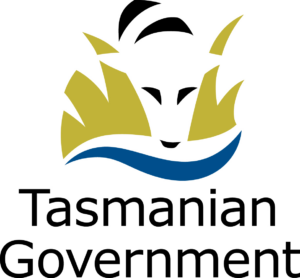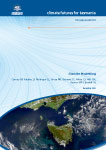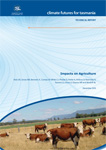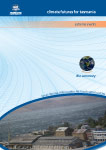Funded by the Commonwealth Environment Research Facilities Program, the project was designed to understand the impacts of climate change on Tasmania’s weather, water catchments, agriculture and climate extremes, including floods and wind damage.
It provided the first fine-scale climate information for Tasmania by downscaling six global climate models with two emission scenarios to generate climate information from 1961 to 2100.
After producing scenarios of future climate change in Tasmania, the group embarked on a number of studies to demonstrate the application of these scenarios in specific contexts.
Studies were completed for dairy pasture growth, the oyster industry, ecosystems, hydropower generation, and infrastructure. Each project was tailored directly toward the policy and operational priorities of each sector.


Under the IPCC’s high emissions scenario (A2), the central estimate of the simulations suggests Tasmania will experience a change in mean temperature of 2.9 °C over the 21st century. The temperature increase for Tasmania under this emissions scenario is less than the projected global warming of 3.4 °C. The projections suggest temperature increases are smaller in the early part of the century, but the rate of change increases towards the end of the century. Under the lower emissions scenario (B1), the central estimate of the simulations shows a rise in mean temperature of 1.6 °C over the 21st century.

The General Climate Impacts Technical Report sets out the projected changes to Tasmania’s climate during this century, including higher temperatures and changes in rainfall patterns.
 Summary Report (PDF, 4MB)
Summary Report (PDF, 4MB)
 Full Report (PDF, 17MB)
Full Report (PDF, 17MB)

The Climate Modelling Technical Report sets out in more detail the performance of the model simulations in reproducing the Tasmanian climate and assesses the likelihood that the simulations accurately project future climate change for Tasmania.
 Summary Report (PDF, 4MB)
Summary Report (PDF, 4MB)
 Full Report (PDF, 30MB)
Full Report (PDF, 30MB)

The Impacts on Agriculture Technical Report sets out the impacts on Tasmanian agriculture from projected climate change. The report examines the key climate indices of frost, drought, chilling and growing degree-days, and focuses on the key agricultural sectors of perennial horticulture, pasture production, grain crops, wine and issues around bio-security.
 Summary Report (PDF, 9MB)
Summary Report (PDF, 9MB)
 Full Report (PDF, 13MB)
Full Report (PDF, 13MB)

The Water and Catchments Technical Report sets out projected river flows, to 2100, for more than 1900 subcatchments in 78 river catchments that cover more than 70 per cent of the State by area. The future operations of Tasmania’s hydro-electric system and 14 major irrigation storages were also simulated to 2100.
 Summary Report (PDF, 2MB)
Summary Report (PDF, 2MB)
 Full Report (PDF, 6MB)
Full Report (PDF, 6MB)

The Extreme Events Technical Report examines extreme rainfall, temperature and drought events in the Tasmanian context to determine how climate change might alter the characteristics of these events in the 21st century.
The summary report also includes information on coastal vulnerabilities, wind hazard and impacts on infrastructure.
 Summary Report (PDF, 2MB)
Summary Report (PDF, 2MB)
 Full Report (PDF, 6MB)
Full Report (PDF, 6MB)

The Extreme Events Technical Report examines extreme rainfall, temperature and drought events in the Tasmanian context to determine how climate change might alter the characteristics of these events in the 21st century.
The summary report also includes information on coastal vulnerabilities, wind hazard and impacts on infrastructure.
 Full Report (PDF, 2.5MB)
Full Report (PDF, 2.5MB)

The Severe Wind Hazard and Risk Technical Report investigates the severe wind hazard and risk to residential buildings in the Tasmanian region, both under current climate and also for two 21st century climate change scenarios.
The report examines trends in severe wind hazard and risk in the Tasmanian region, and has laid the foundation for the exploration of whether the community and government believe the risk is acceptable or if adaptation strategies are required.
 Summary Report (PDF, 6.2MB)
Summary Report (PDF, 6.2MB)
